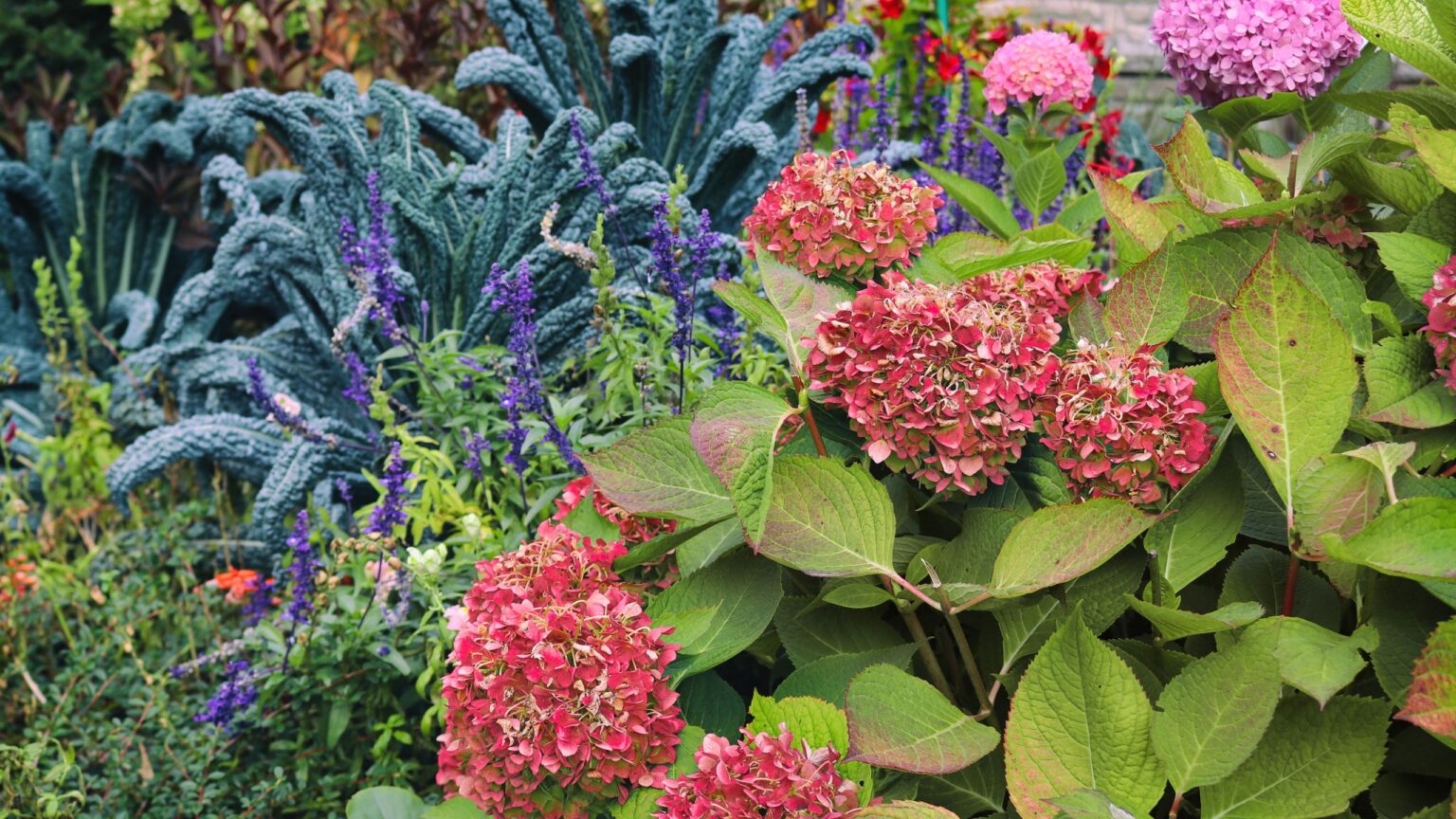Most hydrangeas are reasonably hardy, and can tolerate temperatures right down to -10°C. Sometimes even lower, once they’re properly established, but they still require some help over the winter months to ensure a beautiful flush of flowers next year, and the secret to ensuring that is adding a layer of mulch right now to overwinter them.
Overwintering essentially means giving plants extra protection to help them survive the winter. If you don’t put the effort into protecting your hydrangeas now, you could risk having no blooms next year at all. ‘Because many hydrangeas bloom on last year’s wood, losing those buds is a huge deal; it means you won’t get any blooms in the summer,’ explains Christopher O’Donoghue of Gardens Revived.
He also points out that due to the UK’s increasingly unpredictable winters, Christopher warns that protecting your hydrangeas now is more important than ever. ‘Sudden cold snaps followed by mild spells are becoming increasingly common, and, while hydrangeas can cope with constant cold, these freeze-thaw fluctuations wreak havoc on young buds that are already beginning to swell.’
You can overwinter hydrangeas in pots by moving them to a sheltered area and insulating the pots, but by far the best option for hydrangeas in pots and flowerbeds alike is to add mulch like this organic 40L peat-free Magic Mulch, available on Amazon in autumn to protect the roots.
Mulch also does so much more than keep them nice and snug; it also helps retain moisture and feeds the soil as it breaks down, giving the plant a head start in spring.
‘It’s the simplest way to protect both the roots and those all-important nutrients without any fuss,’ says Christopher.
How to mulch hydrangeas in autumn
There are some experts out there who claim you should remove an inch of compost from around the base of your hydrangeas, before replacing it with an inch of mulch. Not true, says Morris Hankinson of Hopes Grove Nurseries.
‘I don’t think removing a layer of soil is necessary at all,’ he says. ‘However, mulching on top of the soil will help to regulate temperature and protect roots, feed the soil and suppress weeds.’
Christopher agrees, pointing out that ‘mulching acts like insulation, keeping the root system from freezing and thawing repeatedly’.
‘Avoid using fresh manure or gravel,’ he adds, pointing out that the former can scorch roots and the latter offers basically zero protection against winter climes.
The best mulches for the job
If you’re not sure of the best types of mulch for overwintering hydrangeas, Christopher says you need ‘a thick layer (5-10cm) of organic mulch, such as leaf mould or well-rotted homemade compost.
If you don’t have time to whip anything up from scratch, though, he adds that bark chippings which you can pick up from Amazon will also do the job nicely.
Westland
Bed & Border Chipped Bark 70L
The chipped bark is ideal for covering borders and can be used all year round for a smart look.
Sylvabark
Pine Mini Mulch
This mulch should last about two years before needing to be topped up and aswell as protecting plants gives that neat finished look.
RocketGro
Rocketgro Organic Magic Mulch – 2 X 50l
If you want the benefits of homemade compost to mulch your hydrangeas, but are looking for a shortcut this mulch is peat-free, organic and has all the nutrients your plants need.
FAQs
Do hydrangeas need to be cut back for winter in the UK?
Both of our experts are in agreement; you absolutely should never prune or cut your hydrangeas back as part of your overwintering preparations.
‘Always leave the dried flower heads on over winter, as they act like little hats, sheltering the developing buds beneath from frost and wind,’ says Christopher.
Morris agrees, adding: ‘Hydrangeas may turn brown as the temperature decreases over autumn and winter, but the dried flower heads look stunning in a winter garden, so leaving them will give garden interest and shelter for wildlife.’
You should avoid pruning them over the autumn altogether, and save the job for the very late winter or early spring.
Some hydrangeas will need a little more care to survive the winter. Hydrangeas in pots will need moving against a sheltered wall or into an unheated greenhouse, and some Hydrangea macrophylia types in a very windy, vulnerable position, may benefit from some hessian around their vulnerable buds.
But in general, you only need to add one thing to your hydrangeas to survive the winter: mulch! Get them ready and protect your summer blooms.
Read the full article here

